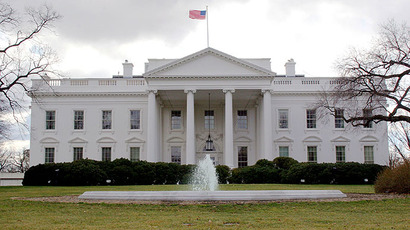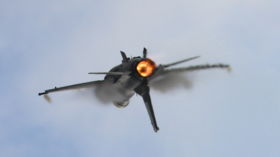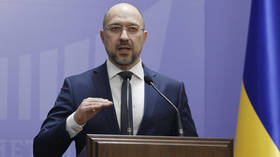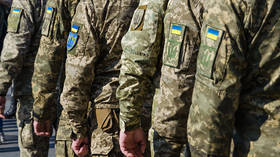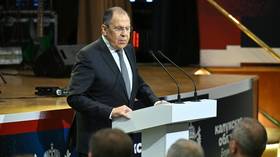MH17 downing anniversary: Two years of accusations & few facts
Two years ago, a plane with 298 people on board departed from Amsterdam to Kuala Lumpur. Halfway into the flight, it was shot down by a surface-to-air missile over the frontline between Ukrainian government loyalists and rebels in the east of the country.
It took just hours for the Western media to blame Russia for the Malaysia Airlines flight MH17 shoot-down. Two years on, the proof implicating Moscow that some governments claim to have has not been made public, and an international criminal investigation into the incident has yet to produce a report.
Incident
Some facts remain undisputed in the case, which has become the most politically-loaded who-done-it of the decade. Flight MH17 was taken down over Ukraine on July 17, 2014. Most of the victims were Dutch, with Malaysians, Australians, Indonesians and British making up the other major groups.
The plane was directed by Ukrainian air traffic to fly over the zone of armed conflict, where, since April, Ukrainian government forces had been battling rebels opposing a coup-imposed government in Kiev. By that time, Kiev had lost at least 16 military aircraft in the crackdown, including two that went down just days earlier. Nonetheless, the airspace had not been closed to civilian flights. MH17 was one of dozens of civilian airliners that flew the route on the presumption that no antiaircraft weapons in the area could hit targets at their cruise altitudes.
A surface-to-air missile fired by a Buk M-1 launcher climbed to an altitude of 10 kilometers at which the Boeing plane was flying and detonated next to the cockpit, sending hundreds of fragments into the air and shredding through the aircraft. The plane broke up in the air and fell to the ground, scattering debris across a large area controlled by the rebels.
Elmar Giemulla, an aviation lawyer and leading expert on air and traffic law, who is representing three families of German passengers that were on flight MH17, told RT that, legally, the Ukrainian government should have closed its airspace under international law if it could not guarantee the safety of flights.
“There were about 700 civilian flights through the Ukrainian airspace per day,” each carrying 100-150 persons, estimated Giemulla, a professor at the Berlin University of Technology’s Institute of Aeronautics and Astronautics. Thus, “definitely, thousands of people have been jeopardized as a consequence of the decision of the Ukrainian government not to close its airspace.”
Reports
So far, the biggest public report to come out on the downing of MH17 was released by the Dutch Safety Board in October of last year. It focused on the technical details connected with the incident and their implications for flying over conflict zones, but avoided assigning blame to any party.
One part of the report has been challenged, however. Almaz-Antey, the Russian company that produces Buk systems, said the board misinterpreted the data that it had contributed for the report when estimating the location of the launch site. The report marked an area of about 320 square kilometers from which the missile could have been fired.
Almaz-Antey produced its own report, marking a 4-kilometer by 6-kilometer zone as the area the missile had probably been launched from. The two calculated zones are located some 10 kilometers apart and had been allegedly controlled by the rebels and Kiev, respectively, on the day of the incident. The Russian company later questioned the warhead the board identified as responsible for the shoot-down, saying an older variant was likely used.
Work on a more conclusive report is currently underway, as the international Joint Investigation Team (JIT) aims to produce court-admissible evidence that could bring the perpetrators to justice. No deadline has been set for the inquiry and the body is keeping the details secret, citing the need not to spook off the culprits. Preliminary results may be released later this year.
Probe doubts
That investigation doesn’t appear to be moving as smoothly as hoped for, however. The latest JIT update complained of difficulties in finding a user manual for a Buk system, despite the fact that Ukraine, a member of the body, has Buk missiles in service.
#MH17 could have been downed unintentionally – int’l investigation team https://t.co/GCPYGoSL2o
— RT (@RT_com) June 6, 2016
In addition, the Dutch media took Kiev to task earlier this month for taking six months to reply to a request from the families of MH17 victims to provide raw radar data. Ukraine says it has none, because it claims that civilian radar was under maintenance on July 17 and the military stations were offline.
Some evidence from Ukraine relevant to the probe remains uncollected. Rebel authorities say local residents regularly collect Boeing fragments, which are stored in case the Dutch ask for them.
The legal effort to hold Kiev accountable for not closing its air space prior to the incident has gotten nowhere so far because there has been “absolutely no reaction” on part of the Ukrainian court apart from an official receipt, which is a kind of bureaucratic answer from the secretariat of the court, but not from the judges, professor Giemulla told RT.
Given the behavior of the Ukrainian court over the nearly two years that have passed since the crash, it is apparent that it “tries to postpone the case to a later date, hoping that there will be a political settlement of the whole situation in the near future,” Giemulla said.
“The court’s strategy is to get rid of the case one day,” he said.
Politicized
The tragic downing had been politicized from the very beginning.
Ukraine and its foreign sponsors accuse Russia of arming and supporting the rebels, an accusation that Moscow denies. Amid the hostilities, Kiev regularly accused Russia of invading Ukraine, claiming that it couldn’t seize control of its eastern territory because of the Kremlin’s fighter jets, tanks, and multiple rocket launchers.
Almost immediately after MH17 was downed, Western media and some governments blamed Russia, claiming Moscow had either provided the Buk system to the rebels or sent its regular troops to take down Ukrainian warplanes on behalf of them.
The possibility that Ukraine may have shot down the civilian plane by mistake was never considered, even though it wouldn’t have been a first for Kiev. In 2001, the Ukrainian military shot down a Russian airliner during a botched exercise held in peacetime, rather than in the disarray of an anti-rebel crackdown.
In response to the accusations, Moscow has demanded that a thorough investigation be carried out and suggested plausible scenarios that contradict the Western narrative. It has also challenged Kiev’s claims that Ukraine had neither warplanes nor Buk systems in the area by producing public satellite and radar images showing the contrary. While the US claims to have evidence proving the rebel’s complicity, that data, if it does indeed exist, has never been declassified or shared with the public or investigators.
As the internationally-recognized inquiry drags on, people want honest unbiased answers, but it’s not clear when, or even whether, they will ever get them.
